The Green Schools Conference 2024 Registration is Now Open.
National initiatives to teach students about climate change
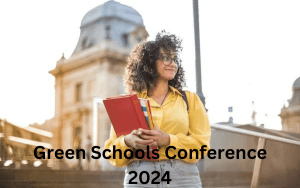 Santa Fe, New Mexico, a historic and LEED Gold city, will host the Green Schools Conference 2024 this spring, March 5-7. This announcement comes from the Centre for Green Schools and the Green Schools National Network.
Santa Fe, New Mexico, a historic and LEED Gold city, will host the Green Schools Conference 2024 this spring, March 5-7. This announcement comes from the Centre for Green Schools and the Green Schools National Network.
Green School; Introduction
Schools that implement the Green School Concept save money, energy, and resources while providing a safe and healthy learning environment for their students.
Green schools originated in the 2002 WSSD, or World Summit on Sustainable Development, held in Johannesburg. The idea was pioneered in Europe in the 1990s out of a recognition that the fate of mankind and the earth is at stake if we continue to abuse and overexploit natural resources in the name of progress.
The notion of “Green Schools” places a premium on empowering students to solve pressing problems in ecology, economics, and society by employing the knowledge and abilities they have already acquired.
Through community participation, it aims to raise awareness among educators and students about the need to protect the environment. Students’ education in such a setting goes beyond the four walls of the classroom to include real-world applications and experiences.
These locations serve as learning tools and provide students with opportunities for hands-on learning.
Aims and Purpose of Green Schools
To improve people’s standard of living, sustainable development must consider each of these factors. The Green School is envisioned as an educational institution committed to environmental preservation.
The following are some main objects;
Effects on the Environment


Reducing energy and water use, decreasing fossil fuel consumption in transportation, decreasing trash destined for landfills, and safeguarding natural ecosystems are all important ways to lessen humankind’s toll on the planet.
Humans and the earth both feel the effects of these activities:
- Reducing energy consumption in buildings alleviates the demand for power plants, decreasing the adverse effects of electricity generation on the environment, such as carbon emissions.
- Facilities that use less water help preserve freshwater ecosystems require less energy to process and transport water and decrease aquifer depletion.
- We know that less garbage sent to landfills means less land being taken away from habitat and other uses and less pollution of water and soil. Reducing waste sent to landfills is known to increase opportunities for material reuse and material recycling.
- Reducing the number of one-person automobile journeys is an easy way to lessen transportation’s carbon footprint.
How to Overcome Learning Gaps in Classroom
Wellness and Health
To protect the health of students and faculty, schools should provide resources for healthy eating and physical exercise, as well as maintain a clean and healthy indoor environment.
Health education has a positive effect on students’ happiness and academic performance.
- The quantity of carbon dioxide (CO2), volatile organic compounds (VOCs), particle matter (PM), and humidity in the air are all factors that have been shown to have a direct influence on student performance and human health.
- Evidence shows that more people will drink water with easy access to it. Lead pollution in drinking water is associated with several adverse health outcomes, including damage to brain development, attention, and behavior.
- It is well known that hormones critical to wakefulness and sleep-wake cycles are affected by exposure to natural light.
- Increasing pupils’ intake of healthy grains, fruit, and vegetables improves their health, mental state, and academic performance.
- We know that reducing obesity rates and encouraging healthy behaviors for life may be accomplished by giving students more time to be physically active throughout the school day.
Education for a Sustainable Future
Sustainability and environmental education equip the next generation to tackle the world’s most pressing problems. Curriculum and teaching methods that foster this kind of literacy should be multidisciplinary, location-based, and grounded in the specifics of each student’s environment.
Students’ knowledge and behavior are influenced by this teaching:
- Instructional practices that emphasize multidisciplinary and place-based problem solving and increase students’ environmental understanding are known to affect behavior modification in the direction of sustainability.
- Studies have shown that pupils’ overall academic performance improves when they view their surroundings as a learning context.
Green School Some Top Efforts and Achievements
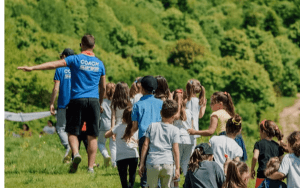

Hear From Educational Institutions on How State Policy is Having an Effect in the Classroom.
“Climate Change Education Across the Nation: How State Policy Is Delivering Impact,” presented by the Centre for Green Schools on March 14, attendees heard firsthand accounts of the positive effects state climate legislation has had on individual school districts.
Panelists from Ten Strands, the Maine Environmental Education Association, and Our Climate attended the Centre to talk about their work on climate education legislation at the state level.
AI For Students: Top 10 AI Learning Resources for Colleges and Universities
Highlights of the Groundwork Being Done Include the Following:
- The Centre for Green Schools promoted its upcoming paper in collaboration with the Campaign for Environmental Literacy, which profiles legislation that supports climate change education in the formal K-12 education system and provides talking points with citations and a model climate literacy bill for advocates. Two states covered in the research, New Jersey and Washington, had their laws recognized by the Campaign for Environmental Literacy.
- Students from Our Climate in Massachusetts spoke about their experience working on the transdisciplinary climate justice education bill, which began in 2020. Since then, student activists have been the bill’s primary proponents. They discussed what they had discovered, such as how difficult it was to advocate during school hours and how opaque the legislative process was. The following steps were discussed, including organizing a lobbying day for educators and developing a platform to drive advocacy strategy with all parties.
- The Maine Environmental Education Association discussed the importance of youth participation in their climate education pilot program and the steps they took to implement it. The youth-led Climate Education Advocacy working group of the Nature Based Education Consortium has been meeting regularly since 2021 to formulate a budgeted policy that provides teachers with equitable access to climate education professional development. Educators and students alike were instrumental in the bill’s passage in 2022 despite its rough road to victory.
- California’s policies and expectations were discussed by Ten Strands, which laid the groundwork for the ongoing work of developing and implementing the state’s climate change and climate justice curricula. The project’s expected duration is four to five years, and it will feature an asynchronous training program and free materials for educators on climate change and justice. In addition to its newest initiative, Ten Strands coordinates the California Environmental Literacy Initiative, a network of organizations and individuals working together to guarantee that all students in the state have access to engaging and effective environmental education.
Having Schools Implement Sustainable and Healthful Buying Policies


Develop a long-term strategy for the district to make environmentally responsible purchases.
“Healthy and Sustainable Purchasing for Schools,” presented by the Centre for Green Schools on September 19, attendees learned about the basics of green purchasing for schools.
Topics discussed included the EPA’s product labels and certifications, the advantages of using green cleaning products, and methods for implementing district-wide standards for purchasing that help reduce waste, improve health, and save money. Panelists represented the EPA, the Oakland Unified School District, and the Kansas City Public Schools.
The Best 10 U.S. Study Abroad Advisors
Five Essentials
KCPS remarked on their experience establishing and launching their green cleaning buying strategy to help those who are just getting started. They advised beginning with the five E’s:
- Get involved by maintaining communication with key constituents (including teachers, students, and parents). Why do they require this? Why do they seem so worried? In what ways may they most benefit?
- Before developing a comprehensive plan, it is essential to assess the status quo. Which items do you use regularly? How are they meeting your requirements?
- Focus on training and education for frontline employees or those directly affected by procurement reforms. Get people on board by demonstrating the relevance and significance of their job.
- Establish: Determine what you want to accomplish and then take the first steps towards achieving it. Start with the small stuff (think of things that have the most popular green alternatives or products that are most often purchased, like paper or electronics), then work your way up to the big stuff. Use pilot programs to test out new items.
- Putting your plans into action means putting your objectives into motion and monitoring their progress. Check up with your customers to see how the new items are faring. Is there a reduction in expenses? One option for assessing the effects of potential purchases is to use a sustainability score metric system, as is being implemented by OUSD.
Challenges Faced and Knowledge Gained.
Be bold, confront obstacles and blockages in your green procurement process, and seek others for help on best practices.
Green buying and purchasing practices have contributed to OUSD’s effectiveness in reducing district-wide trash. However, they have run into problems and obstacles, such as the difficulty of switching from decentralized to centralized school buying and the expense of changing to reusable cafeteriaware.
- Through their experiences, KCPS highlighted the need for early stakeholder and frontline employee involvement. They did this later, but it would have paid off far more if they had gotten people involved immediately.
- Fortunately, much has already been accomplished in green buying, and tools and associations are available to aid school districts on their journey.
- The Environmental Protection Agency (EPA) highlighted a guide they have developed for consumers interested in green buying via the EPPP, Ecolabels, and the Safer Choice initiative. People who care about their health and safety can benefit from these programs.
Pandora’s Box of AI in Higher Education. It Will Change The Education and the Students. It Will Change The Education and the Students
Collaboration Between School Health and Facilities Professionals to Improve Indoor Air Quality (IAQ)
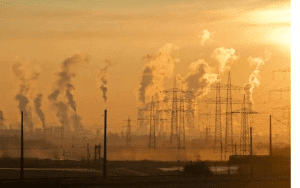

Discover methods to deal with indoor air pollution.
The Centre for Green Schools, the National Association of School Nurses, and Chemical Insights Research Institute of U.L. Research Institutes, a leading expert organization in indoor air quality (IAQ), hosted a joint webinar on April 27 titled “Identifying and Addressing Emerging Indoor Air Pollutants:
School Health and Facilities Staff Collaborations.” This webinar focused on how school health and facilities professionals can work together to improve the health of students and staff.
The panelists’ united interest in promoting healthy learning environments was matched by their diverse backgrounds in public health research and the health and safety management of educational settings. Important things to remember from the webinar are:
1. Figure Out What the Issue Is.
IAQ is a problem for a lot of schools. According to a recent poll, over two-thirds of public school districts have upgraded or replaced more than one building system or feature to improve indoor air quality (IAQ).
Pollutants such as VOCs, SVOCs, particulates, allergens, and biological contaminants can enter schools and cause harm to students and staff. Common construction materials, outside air pollution, activities (such as cleaning or printing), excess moisture, and human allergies contribute to indoor air pollution.
Teachers, students, and school visitors are vulnerable to these toxins because they can be inhaled, ingested, or absorbed through the skin. Pollutants float in the air and settle in the dust of indoor spaces. Students of younger ages are more susceptible to pollution because of their excellent respiratory rates, lower resistance to airborne particles, and habit of putting their hands in their mouths.
The experts on the panel talked about four new types of environmental hazards seen on college campuses:


- While 3D printing opens up exciting new avenues for innovation, its production process can release harmful contaminants such as volatile organic compounds and ultrafine particles. Fortunately, exposure hazards may be minimized by paying attention to essential safety practices. Selecting low-emitting printers, installing them in a room with adequate ventilation and particle filtering, and increasing the distance between observers and working printers are all best practices.
- The widespread prevalence of vaping in school facilities such as restrooms, corridors, and buses raises severe health and safety concerns. There are volatile organic compounds (VOCs) and particles like metals in ENDS vapor, according to recent studies. When it comes to protecting the health of both first-time and passive vapers, education is critical.
- More people are at risk now than ever before because of wildfires. Wildfires that spread across the wildland-urban interface, where built areas meet natural ones, are especially dangerous. Because of the unusual nature of the fuel mix, contaminants not typically seen in wildfire smoke are released. The public health importance of preserving IAQ following these smoke episodes cannot be overstated.
- Cleaning schools is a must. However, too much cleaning product and disinfectant use might cause pollution. New cleaning procedures are needed. Short-term health consequences include eye, ear, nose, and throat irritation, headaches, and nausea. They can be caused by the volatile organic compounds (VOCs) contained in many disinfectants.
Improve IAQ by Working On It.
As a staff, we must collaborate to improve indoor air quality in our schools. Here are a few potential answers:
- Whenever feasible, specify or purchase certified or validated low-emission and particular chemical-free items.
- High-touch surfaces should be the primary focus of your cleaning efforts, and cleaning agents should be used in areas with adequate ventilation. To avoid the formation of settled dust, establish a proactive, periodic cleaning regimen.
- For proper ventilation and filtration, check that your HVAC system is drawing in fresh air from outside, filtering it with the best possible minimum efficiency reporting value (MERV) filter, and exhausting the clean air. To keep your HVAC system functioning correctly, you must maintain the ductwork., which requires coordination with the building’s maintenance crew.
- The relative humidity indoors should be kept between 40 and 60 percent. Fix any water leaks and use dehumidifiers if necessary. Any items that have become temporarily damp should be removed and dried out quickly.
- Educate the building’s occupants on their role in enhancing indoor air quality (IAQ) and how to spot and report problems so that they may be looked into. Distribute information on the facilities team’s work and the IAQ management strategy via preexisting channels, such as newsletters or a building-wide signage initiative. This lets the public know what measures are being taken to ensure their safety and how they may help.
Work Together to Ensure a Bright Future for Everybody.
School personnel like nurses and maintenance workers must have open lines of contact with one another.
- School nurses can help promote good IAQ by recognizing symptoms of occupant health that may be related to poor IAQ, working with facilities staff to identify and mitigate hazards, obtaining safety data sheets for chemicals used in their schools, and increasing occupant awareness of the HVAC system and its impact on IAQ.
- Facilities personnel must maintain momentum by arguing that a student’s health is tied to the facility’s health. Awareness-raising and gaining support for improved IAQ rely heavily on collaboration and communication. Last, put your current assets to good use by designing and maintaining wholesome public areas.
Maintaining safe and healthy learning environments in schools requires collaboration among several stakeholders.
Effective Garbage Collection in Schools
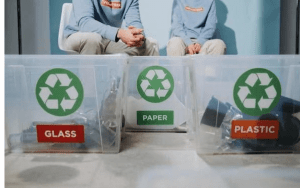

Hear advice from administrators in charge of a school district’s waste management system on implementing zero-waste policies.
In a webinar titled “Re-imagine, Re-design, and Recycle: School Waste Collection Systems That Work,” presented by the Centre for Green Schools on March 22. The representatives of Lincoln Public Schools in Nebraska, STRATEGY Zero Waste Solutions Missoula County Public Schools in Montana, and the Madison Metropolitan School District in Wisconsin discussed their respective school districts’ approaches to waste management.
The panelists shared details regarding the waste management systems at their respective schools, including creative bin designs, essential takeaways from the trip, and obstacles that still need to be overcome. The experts on the panel shared the following advice:
- One should first focus on primary education. It is recommended to first test your program in elementary school cafeterias before rolling it out to secondary schools and higher grades. It is considerably easier to instill a culture of trash sorting in young pupils, and elementary school cafeterias typically have more preexisting infrastructure to facilitate such instruction. Using this format, you may show pupils how to properly use your new garbage disposal system. Keep the program in mind for when these pupils reach middle and high school.
- Value the input of employees and the backing of superiors. Suppose you want to launch a new waste management initiative or revamp an existing one. In that case, you’ll need the support of the school’s administration, starting with the principal. Your principal is the program’s leader, and all the other stakeholders are there to back them up. It’s also essential that your cleaning and catering personnel are involved in the adjustments and feel like they have your backing. For instance, when recycling cartons, you’ll need extra garbage stations equipped with rinsing buckets and clean mesh bags. Employees must fully support and cooperate for the procedure to succeed.
- I am always learning more. Educate everyone involved and use a multi-pronged strategy. Consider having kids create signs, holding sporting activities in the classroom, presenting to administrators during the first week of school, and employing zero waste coaches in the sort lines.
- Form effective alliances. Partnerships within the district and the wider community are included. Supporting your zero waste project through in-district collaborations may consist of enlisting the aid of academic courses and programs. The Missoula County Public Schools and the Lincoln Public Schools mentioned how they worked with a CAD class to design their respective cart systems and how students from an industrial/technical school made the signs for the trash cans. Partners in the community might be anything from charitable organizations that provide assistance with programs and grant financing to garbage collection and disposal services. Make sure you keep in close contact with partners and facilities if you are launching a new program at your institution to verify that the services you are giving and the amounts you are providing them with are enough.
- Think beyond the box. The panelists discussed the many processes in which they exercised their creativity. The Madison Metropolitan School District (MMSD) distributed hand-cut garbage lids it had made to encourage students to alter their waste management practices and stop piling up trash. Lincoln Public Schools addressed the issue of sending the hauler too many cartons of leftover milk. The Carton Council helped the district develop the idea of using mesh bags for gym equipment to collect the cartons. Be bold and seek out other perspectives or unconventional answers.
Site Evaluations for Cleaner Air and Less Wasted Energy


Examine what speakers had to say about evaluating school buildings.
The webinar “Facilities Assessments for Improved Air Quality” was presented by the Centre for Green Schools on October 27. It included conducting facility assessments, delivering results, utilizing government money, and the climatic co-benefits of energy efficiency.
The Smart Energy Design Assistance Centre at the University of Illinois at Urbana-Champaign and the Ann Arbour Public Schools in Michigan hosted a panel discussion in which they shared their practical knowledge, tactics, and advice for enhancing the quality of indoor air and lowering energy costs through the use of building audits.
The most important points made by our experts are as follows:
- It’s crucial to evaluate the whole building. Essential information is gathered, an on-site evaluation is performed, a report is written, and a course of action is communicated as part of a facility assessment.
- The utilities, HVAC systems, operational schedules, and building layouts are all crucial information that must be gathered. Preparing the necessary tools for your evaluation, including identifying possible areas of emphasis and providing early benchmarking, is an essential first step.
- Pictures are taken, building controls are reviewed, health and safety concerns are documented, the building envelope is inspected, air flow rates are sampled, carbon dioxide levels are checked, and the HVAC system’s general condition is evaluated to determine the air quality.
- Once you’ve finished evaluating the site, write up a report that details your findings, any recommendations you made, the current state of things, and a prioritized list of where to begin.
- Share your strategy, outlining which projects will receive priority implementation and which may wait in light of the evaluation results, where the money will come from (such as utility rebates, grants, or low-interest loans), and what other advantages can be expected.
- Hire a third party using American Rescue Plan ESSER funds to conduct ventilation evaluations or retro-commissioning, then use the results to inform investments in equipment that will raise indoor air quality. Many educational institutions may need the assistance of outside specialists because they need more personnel or resources to conduct a district-wide assessment of the systems affecting air quality. Long-term improvements to schools in need can also be made using this government money.
- The safety of both employees and residents depends on open lines of communication. Ann Arbor Public Schools conducted an evaluation and strategy for their facilities to reduce the risk of COVID-19 transmission. Then, they shared the results with the public as a study. In this research, they issued a complete room-by-room ventilation evaluation for all district buildings. They addressed mitigation options and measures for places below “excellent” ventilation. The community felt more at ease sending their children back to school after hearing about the action plan.
- Staff members can take measures to monitor indoor air quality. It may seem daunting to do a complete facility evaluation. Still, there are minor measures your facilities team may need to take to monitor IAQ. The carbon dioxide levels may be monitored, filtration systems evaluated, and preventative maintenance prioritized.
How to Organize Your School’s Last Cleaning Session


During your school’s cleanup initiative, consider new uses for old things.
The end of the school year means a flurry of activity as teachers, students, and administrators clear out their classrooms, lockers, and offices, often resulting in piles of trash. However, with some forethought, most of these year-end products may be donated, repurposed, or recycled and kept out of landfills.
The Centre for Green Schools recently hosted a “Community Conversation” with sustainability personnel from local school districts to address the difficulties of recycling difficult items and the best ways to organize classroom, closet, and locker cleanouts.
Laurel Bates of Oregon’s Clackamas County offered advice on how to make the most of the time you have before you leave:
- Make sure your cleanup has a solid strategy behind it.
- Set out containers for collecting desired goods because only some things can be recycled.
- Find someone willing to help with collection and organization.
- Having extra bins or pickups set up requires coordination with haulers.
- Think of organizing cleanup initiatives not simply at the end of the year but also in conjunction with campus relocations.
It might take a lot of work to find appropriate recycling methods for large items. To encourage waste reduction and product reuse, certain school districts have developed internal programs. One such program is the San Francisco Unified School District’s furniture swap.
Successful programs to collect, organize, and redistribute or sell old objects acquired with school funding may be found at the Santa Fe Public Schools in Arizona and the Lincoln Public Schools in Nebraska. Philadelphia Public Schools in Pennsylvania provide a STEM lending library to teachers to decrease the initial purchase of supplies like science kits, light meters, and stream tables.
Members of the organization also discussed actual difficulties they’ve encountered:
- Media reports of dumpsters are full of recycled books sparked public outcry.
- The interminable stack of file folders
- Finding the money to pay to have used furniture or books shipped to charities that can reuse them.
- Dealing with a variety of school cleanup policies (some schools make students do it, while others rely on staff)
- Recruiting enough people to help clean all the schools in a coordinated fashion.
The Circular Economy-Related Programme in Schools


What Measures Your Educational Institution May Take to Make a Difference.
“Closing the Loop: The Circular Economy in Schools,” presented by the Centre for Green Schools on September 29, speakers discussed circular economies, how they relate to zero waste initiatives, and specific tactics for getting to trash-free schools. Tips for effectively rethinking campus resource utilization were examined by a panel including representatives from TRUE and the University of California, Berkeley.
Some essential lessons for organizing your campus:
- You should always take stock of what’s going into your garbage. Understanding the composition of your school’s trash is essential for any circular economy initiative. Remember that a waste-free audit must begin at the facility’s entrance. Once you have finished your zero waste audit, it is essential to reflect on the findings, prioritize waste reduction and reuse, implement a thorough monitoring system, and include faculty and students.
- Don’t get worked up over nothing. The process of conducting and analyzing a zero-waste audit might initially appear daunting. Focus on the big picture when making early adjustments. Consider the items that account for half or more of your trash and work to eliminate them. You shouldn’t fret over trifles at this time.
- Cut down on excess. Successful circular economies rely heavily on minimization. On your campus, there are simple methods to begin:
- Making the switch to reusable dishware in the break room
- Adopting measures to reduce paper use
- Reusing containers to live longer
- Reusing old boxes and packaging
- Any institution can open a new school; you can still make a difference on campus even if your school has limited time, staff capability, and resources. If you want to see a change in how trash is handled in schools, don’t tell kids to create their own programs; instead, have them lobby for more sustainable buying practices at the district level. Students, in addition to school administrators and boards of trustees, are ideally suited to assist with the preliminary groundwork necessary to institutionalize a school-wide circular economy.
Using what you already have, you can accomplish waste reduction. If you have an extra budget, consider buying recycling and composting bins instead of garbage cans.
A Guide to Creating a Sustainable School-Revolving Fund
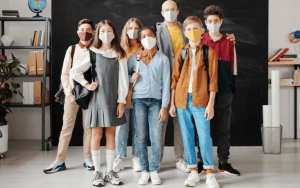

Get the Lowdown on a Centre for Green Schools Webcast and its Takeaways.
“Strategies for Implementing a Green Revolving Fund,” presented by the Centre for Green Schools on June 23, attendees learned about GRFs and how they may be used to finance capital improvement projects in elementary, middle, and high schools.
Strategies, challenges, and triumphs of GRFs were discussed by panelists from the Fenn School, the Sustainable Endowments Institute, and the Durham Public Schools.
A GRF, in its most basic form, is an account where money is set aside to be invested in and used to finance efficiency and sustainability projects, with the savings generated by those investments being put back into the GRF account to fund other such initiatives.
The money can be used as an “internal loan” by the school to cover the cost of a project, with the resulting savings in efficiency being used to pay back the original loan and support additional improvements.
Many people choose to utilize a GRF because it helps them turn their spending into an investment and reduces the stress of having limited financial resources. Tracking data and results, expanding operations, and gaining favorable public attention are all made possible by these resources.
Here are a few of the most essential things our panelists have learned from working with GRFs:
- You’re welcome to jump in mid-game. The magnitude of green revolving funds might differ. A fund can be established with as much or as little initial cash as the investor chooses. If you’re just getting started, even $10,000 will do. Grants, utility rebates, donor contributions, and current operating or capital budgets are potential funding sources.
- Study what has already been done. Do your research and observe successful fund managers as you seek to develop your own. Many organizations before you have tackled similar problems, so you may learn from their experiences and those of others, especially universities. To help you start, the Sustainable Endowments Institute provides a wealth of information.
- Put everything in order. The figures make your case and help you to tell the tale while arguing for the establishment of green revolving funds by using data you collect on your campus initiatives. You should also win over people all around your organization. Think about enlisting the help of people like the school board, community members, and supervisors to help with finances.
- Research various project management software. You may get help administering your money by using a platform like GRITS. GRITS is an alternative to spreadsheets for managing finances and keeping tabs on environmental and energy-saving initiatives.
Opportunities for Schools to Receive Federal Funds


New federal funding opportunities for schools were discussed in a webinar hosted by the Centre for Green Schools on November 17, titled “Federal Funding Opportunities for Schools: Energy, IAQ, and Resilience Projects.
” These opportunities include the Elementary and Secondary School Emergency Fund Relief (ESSER), President Biden’s bipartisan Infrastructure Investment and Jobs Act (IIJA), and the Inflation Reduction Act (IRA).
In this webinar, the panelists discussed the many financing sources, how to apply for them, what they might be used for in practice, and what’s in store for the future. US Green Building Council (USGBC), U.S. Department of Energy (DOE), and Maryland’s Wicomico County Public Schools (WCPS) panelists were all in attendance at the Centre.
Highlights from the panelists include the following:
1, The Centre for Green Schools found that the majority of ESSER III. funds to enhance air quality by upgrading the existing HVAC systems and air filtration mechanisms to improve indoor air quality. According to the data, it was also expected that smaller districts would allocate a more significant percentage of their funds to infrastructure improvements.
2, For example, the Center’s research highlights Wicomico Country Public Schools, whose superintendent revealed that $42 million of ESSER money will be used to upgrade district facilities. Improved indoor air quality and energy efficiency were the primary goals of this project, which entailed district-wide techniques for cleaning duct work, cleaning HVAC equipment, testing and balancing existing building systems, and updating HVAC, windows, and doors. The district was able to successfully complete this massive endeavor by employing a combination of its facility’s condition database and the facilities’ highest needs index.
Current and future financing prospects for schools were discussed by the U.S. Department of Energy. Here are the three chances they identified:
- IIJA’s $500 million Renew America’s Schools award funds the construction of greener, more cost-effective school facilities. Renew America’s Schools grant applications are now accepted through April 21, 2023. Attend the free webinar on December 6 at 1:00 p.m. Eastern Time by registering here.
- Supporting local education agencies in their efforts to train and teach energy management teams to identify, design, and execute healthy and energy-efficient renovations to schools is the goal of the Energy CLASS award opportunity.
- Supporting K-12 schools in low-income or rural regions in their efforts to enhance energy performance, decrease carbon emissions, and foster healthy learning environments is the objective of the Efficient and Healthy Schools Campaign. Both participants and supporters may benefit from the initiative, with the latter being industry leaders and professionals who provide technical assistance to participating schools and districts to help them increase resilience techniques, reduce emissions, and increase energy efficiency.
Finally, USGBC discussed IRA financing sources for green school infrastructure. Long-term, cumulative tax advantages are made available to school districts by this statute. This implies that districts and schools can take advantage of more than one IRA tax break.
The U.S. (USGBC) has summarized the IRA provisions relating to green buildings and sustainable communities. Schools should also keep a lookout for the following possibilities related to individual retirement accounts:
- Commercial Energy Efficiency Tax Credit (IRC Section 179D) (IRC Section 13303).
- Credit for the use of Clean Energy Resources (Subsections 48 and 13702)
- Tax credit for electric vehicle infrastructure under Section 30C (13404)
Green Schools Conference 2024:


Education seminars are only one of many features of this three-day gathering.
The Green Schools Collaborative (GSC) is a network of educators and advocates working to transform the world’s schools into environmentally responsible learning environments. The 14th-year conference spans three days. It is a hub for the green schools community, inspiring and facilitating its growth.
Programming of Green Schools Conference 2024
In 2024, there will be some fantastic summits happening over three days. You’ll hear from some of the brightest thought leaders out there! Gain hands-on skills training at workshops and network with professionals from other fields and their peers and potential employers.
The Santa Fe Community Convention Centre, awarded LEED Gold, will host educational events.
Beginning on March 5, 2024, seminars and summits will run for one day.
On March 6, attendees will be treated to the Best of Green Schools Award Ceremony and Reception, an inspirational opening keynote address, interdisciplinary content and education sessions, and the chance to participate in a “speed greening” networking exercise with green school resource providers.
On the last day of the conference, March 7, attendees will be inspired to keep pushing forward the green schools movement by hearing multidisciplinary material provided in education sessions and a spectacular closing keynote address.
This year’s event has brand-new opportunities for attendees, like yoga in the morning, wellness challenges, and opening circles made for deeper, more meaningful connections among guests.
The Conference Will Resume With a Full Slate of Events from March 5 to 7, 2024.
Santa Fe, New Mexico, a LEED Gold city, will host the 2024 Green Schools Conference (GSC) from March 5-7, 2024. The conference aims to provide a platform for the green schools community that inspires and facilitates the progress of the green schools movement, and registration is now open.
The Green Schools Collaborative (GSC) is a network of educators and advocates working to transform the world’s schools into environmentally responsible learning environments. Three days of in-depth education, networking, and memorable moments from inspirational sessions and keynote presentations are planned for the 14th annual GSC in Santa Fe, a quintessential destination for the green schools community.
Attend a Conference that Deals With Pressing Topics Facing Society Today.


Green schools and other forms of environmental education have felt the effects of the climate crisis keenly. There will be five distinct educational focuses at the 2024 GSC, including topics such as:
- Making a Plan for the Future
- Initiatives to Improve the School Climate
- In good health
- The Role of Education in Society
- To create environmentally friendly infrastructure
On March 4, pre-conference attendees will have the chance to experience Santa Fe, known as “the City Different,” on off-site visits of sustainable schools in action.
The conference education program takes off on March 5 with half-day workshops and summits designed to provide attendees concrete action plans they can implement when they return to their workplaces. Attendees will then have the chance to meet and learn from green resource providers at a speed-networking event.
The next day, March 6, GSC 2024, will continue with a full day of interdisciplinary education sessions covering topics like leveraging new funding sources and models, the intersectionality of sustainability and equity, empowering student voices for climate action, and nature-based strategies for education and wellness.
Awards ceremony and reception on March 6. there will be an inspiring keynote lecture. On the last day, March 7, there will be a half-day of educational workshops, sponsored expert panels, and an encouraging keynote address that spans disciplinary boundaries.
The GSC program website will soon include GBCI continuing education material and additional session and speaker data.
Save Money by Registering Before January 11!
Individuals and organizations can now register for the 2024 GSC. The Eldorado Hotel & Spa and the Santa Fe Community Convention Centre are the only two venues for the event, and both are at capacity. Take advantage of the chance to hear from and connect with forward-thinking green school advocates at this event.
One half-day workshop, one thought leadership summit, one and a half days of multidisciplinary education, networking events, the eXchange display, lunches, the Best of Green Schools Awards ceremony and receptions, and inspiring central stage moments are all included in the GSC Pass.
Hotel Rooms for the GSC Conference Can be Booked at a Reduced Cost.
From March 3-8, 2024, the Eldorado Hotel & Spa, the conference site, offers discounted room rates of $199 per night (including applicable taxes). There is also a state occupancy tax of 7.31%, bringing the total to 8.31%. At check-in, you’ll be charged a $25 per-night amenity fee. Make sure you get a room at the conference hotel by reserving one online by February 12.
Show Your Commitment to Eco-Friendly Education by Becoming a Green Schools Challenge (GSC) Sponsor.
Having emerged from the epidemic stronger and more strategically positioned, GSC sponsors have unique chances to interact with our particular audience. Get the prospectus to discover how your company may benefit from increased visibility, access to sustainability leaders, and opportunities to showcase its expertise.
Visit blogkingworld.com for more useful and exciting educational articles.




